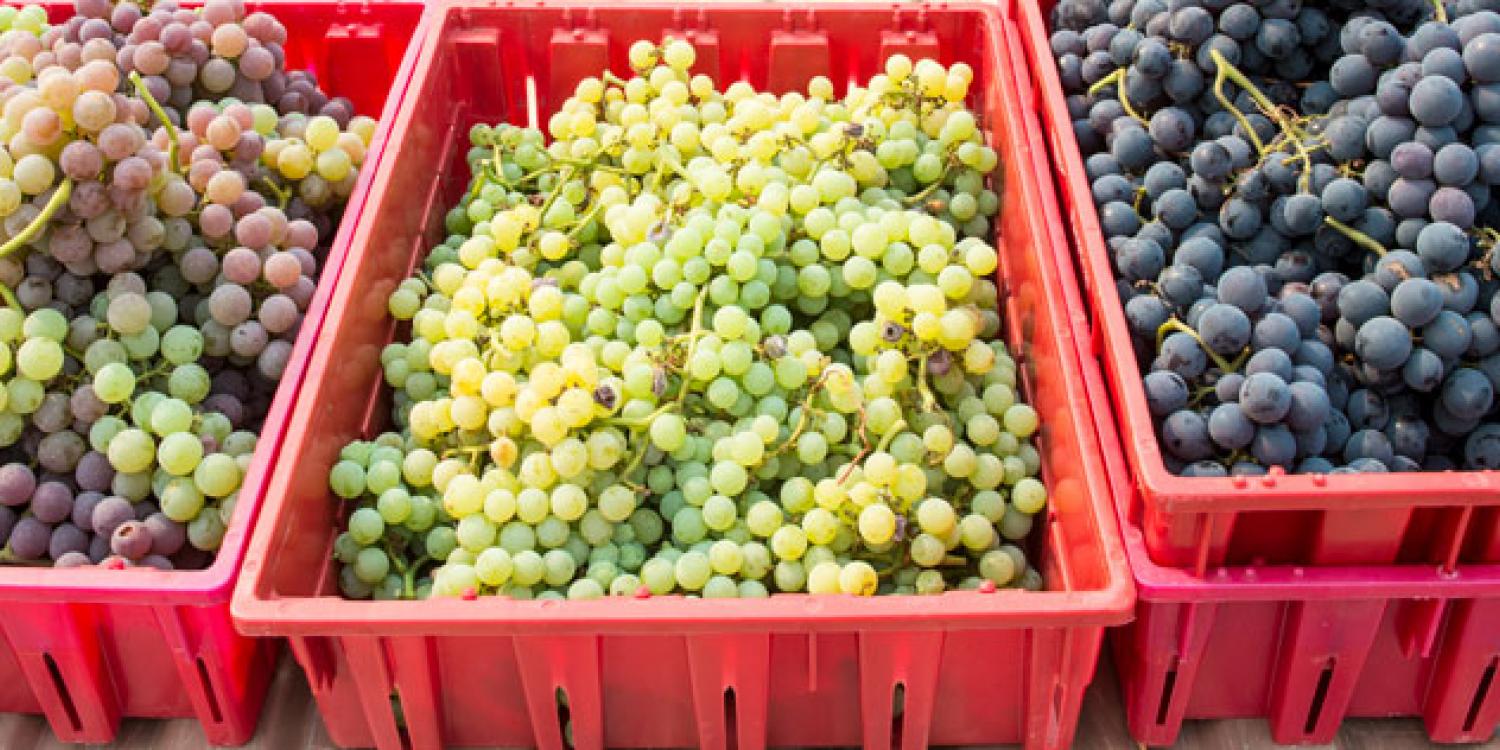
Oregon’s Willamette Valley has a good climate for grape growing but is primarily known for its wine grape production. Table grapes, however, remain a minor crop, grown on a small scale within diversified farming operations. With increasing interest in purchasing local foods, Oregon consumers could support a larger table grape industry.
Table grapes have been grown at Oregon State University's North Willamette Valley Research and Extension Center (NWREC) since 2001. In 2014, OSU Extension and Agricultural Experiment Station researchers partnered with renowned fruit breeder John Clark of the University of Arkansas to conduct field trials using some of his table-grape selections to compare their performance to Oregon varieties.
“We wanted to look at how vigorous the plants were, their yield and their fruit quality,” said Amanda Davis, a faculty research assistant who led the three-year project. “We also looked at their size, weight, cluster weight, sugar content, disease resistance and their appearance, which will affect consumer preference.”
By the end of the project, five of Clark’s selections became named varieties. Compassion is the most promising for the Willamette Valley, with excellent fruit quality and well-shaped, attractive clusters. It also stores well. Two other new varieties – Faith and Joy – also show promise, with high yield and good fruit quality overall.
The results of the field trials were published in the Journal of the American Pomological Society.
Oregon growers, specifically those who operate small, diversified farms, now have new table-grape options.
“Just like wine grapes, there are a lot of different grape varieties that we can grow here successfully,” Davis said. “It’s not a limitation of the climate, it’s a limit of the market. Our varieties of table grapes taste really good, with a burst of flavor. There is room for expansion and clearly some small farmers who are interested in adding it to the mix of crops they are growing.”